|
|
 |

|

|

|
Active Directory Overview
|
Posted: Wednesday, June 30, 1999
Contents

Introduction: What Is a Directory
Service? |
The Active DirectoryTM service is a central component of
the Windows® 2000 operating system platform. Understanding Active
Directory is important to understanding the overall value of Windows 2000.
This introduction to the concepts and technologies behind Active Directory
describes its purpose, provides an overview of how it works, and outlines the
key business and technical benefits it offers organizations.
Today, networked computing is more important than ever
for businesses to remain competitive. As a result, modern operating systems
require mechanisms for managing the identities and relationships of the
distributed resources that make up network environments. A directory service
provides a place to store information about network-based entities, such as
applications, files, printers, and people. It provides a consistent way to name,
describe, locate, access, manage, and secure information about these individual
resources.
Further, a directory service acts as the main
switchboard of the network operating system. It is the central authority that
manages the identities and brokers the relationships between these distributed
resources, enabling them to work together. Because a directory service supplies
these fundamental network operating system functions, it must be tightly coupled
with the management and security mechanisms of the operating system to ensure
the integrity and privacy of the network. It also plays a critical role in an
organization's ability to define and maintain the network infrastructure,
perform system administration, and control the overall user experience of a
company’s information systems.
The need for an ever more powerful, transparent, and
tightly integrated directory service is driven by the explosive growth of
networked computing. As local area networks (LANs) and wide area networks
(WANs) grow larger and more complex, as networks are connected to the Internet,
and as applications require more from the network and are linked to other
systems through corporate intranets, more is required from a directory service.
A directory service is one of the most important components of an extended
computer system because it:
 | Simplifies
management. Provides a single, consistent point of management for
users, applications, and devices.
 | Strengthens
security. Provides users with a single sign-on to network resources
and provides administrators with powerful and consistent tools to manage
security services for internal desktop users, remote dial-up users, and
external e-commerce customers.
 | Extends
interoperability. Supplies standards-based access to all Active
Directory features as well as synchronization support for popular
directories. | | |
A directory service is both a management and user tool.
As the number of objects in a network grows, the directory service becomes
essential. The directory service is the hub around which a large distributed
system turns. To address these needs, Windows 2000 Server introduces Active
Directory, an integrated set of directory services that improve the management,
security, and interoperability of the Windows network operating system.
Active Directory is an essential and inseparable part of
the Windows 2000 network architecture that improves on the domain
architecture of the Windows NT® 4.0 operating system to provide a directory
service designed for distributed networking environments. Active Directory lets
organizations efficiently share and manage information about network resources
and users. In addition, Active Directory acts as the central authority for
network security, letting the operating system readily verify a user's identity
and control his or her access to network resources. Equally important, Active
Directory acts as an integration point for bringing systems together and
consolidating management tasks.
Combined, these capabilities let organizations apply
standardized business rules to distributed applications and network resources,
without requiring administrators to maintain a variety of specialized
directories.
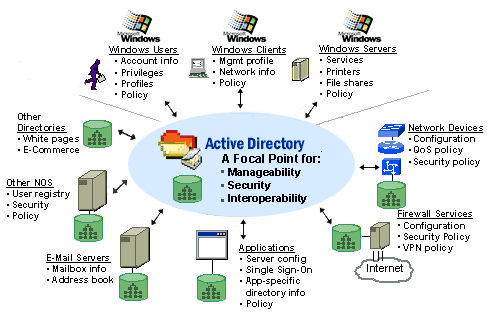
Active Directory provides a single point of management
for Windows-based user accounts, clients, servers, and applications. It also
helps organizations integrate systems not using Windows with Windows-based
applications, and Windows-compatible devices, thus consolidating directories and
easing management of the entire network operating system. Companies can also use
Active Directory to extend systems securely to the Internet. Active Directory
thus increases the value of an organization’s existing network investments
and lowers the overall costs of computing by making the Windows network
operating system more manageable, secure, and interoperable.
Many vendors build specialized repositories or directory
services into their applications and devices to enable the specific
functionality their customers require. For example, e-mail products include
directory services that let users look up and send mail to others. And server
operating systems use directory services for features such as user account
management and storing configuration information about applications. Because
these directory services are targeted narrowly to the needs of the application
or device and often lack standards-based interfaces, most companies have found
that they are responsible for many different directories that can’t be
managed centrally or interoperate easily with each other. Having many
incompatible directory services means that:
 | End users must use multiple user accounts and
passwords to log in to different systems, and they must know the exact
locations of information on the network.
 | Administrators must understand how to manage each
directory within the network and must duplicate many steps when procedures,
such as adding a new employee to a company, involve many different
directories.
 | Application developers must write different logic
for every directory that their applications need to access. | | |
The proliferation of customized directory services
translates directly into a continually rising cost of ownership: it requires
greater management, necessitates more complex applications, and adversely
affects the productivity of the end user. In the near term, companies need to
find ways to halt this trend and minimize the total number of directories that
they have through proactive consolidation. Over the longer term, the best
solution is to standardize based on technologies that provide the required
levels of scalability, standards-based interoperability, and operating system
integration.
Active Directory is the first enterprise-class directory
service that is scalable, built from the ground up using Internet-standard
technologies, and fully integrated with the operating system. In addition to
providing comprehensive directory services to Windows applications, Active
Directory is designed to be a consolidation point for isolating, migrating,
centrally managing, and reducing the number of directories that companies have.
This makes Active Directory the ideal long-term foundation for corporate
information-sharing and common management of network resources, including
applications, network operating systems, and directory-enabled devices.
The following section gives an overview of the core
Active Directory technologies. A detailed presentation of this material is
available as a Windows MediaTM event, that you can access from the Related Links
section below.
Active Directory lets organizations store information in
a hierarchical, object-oriented fashion, and provides multi-master replication
to support distributed network environments.
Hierarchical Organization
Active Directory uses objects to represent network
resources such as users, groups, machines, devices, and applications. It uses
containers to represent organizations, such as the marketing department, or
collections of related objects, such as printers. It organizes information in a
tree structure made up of these objects and containers, similar to the way the
Windows operating system uses folders and files to organize information on a
computer.
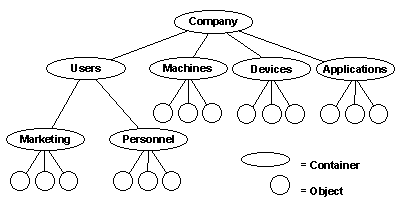
Figure 1: Active Directory organizes information
hierarchically to ease network use and management.
In addition, Active Directory manages the relationships
among objects and containers to provide a single, centralized, comprehensive
view. This makes resources easier to find, manage, and use in a highly
distributed network. The Active Directory hierarchy is flexible and
configurable, so organizations can organize resources in a way that optimizes
their usability and manageability.
In Figure 1 above, containers are used to represent
collections of users, machines, devices, and applications. Containers can be
nested (created one-inside-the-other) to reflect accurately the company’s
organizational structure. In this case, marketing and personnel organization
containers represent those respective departments, and their relationship to one
another, within the company. Grouping objects in the directory lets
administrators manage objects on a macro-level (as collections) rather than
one-by-one. This increases management efficiency and accuracy while letting
organizations align network management with their business processes.
Object-oriented Storage
As mentioned earlier, Active Directory stores
information about network elements in the form of objects. These objects can be
assigned attributes, which describe specific characteristics about the object.
This lets companies store a wide range of information in the directory and
tightly control access to it.
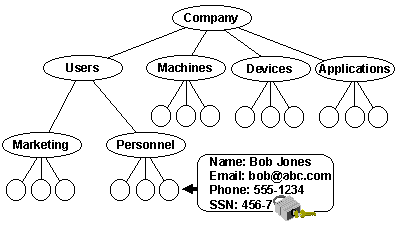
Figure 2: Active Directory objects and attributes are
protected by access control lists.
As illustrated in Figure 2 above, object- and
attribute-level security lets administrators precisely control access to
information stored in the directory. For example, a user object stored in the
directory for Bob Jones has attributes for Bob’s name, e-mail address,
phone number, and Social Security number. The Active Directory lets
administrators assign access privileges for each attribute of the object, as
well as for the entire object. In this case, the system administrator has
allowed global access to the Bob Jones object, but has locked access of the
Social Security Number attribute.
Multi-Master Replication
To provide high performance, availability, and
flexibility in distributed environments, the Active Directory uses multi-master
replication. As illustrated in Figure 3 below, this lets organizations create
multiple copies of the directory, known as directory replicas, and place them
throughout the network. Changes made anywhere on the network are automatically
replicated throughout the network. (This is in contrast to single-master
replication in which all changes must be made to a single, authoritative
directory replica).
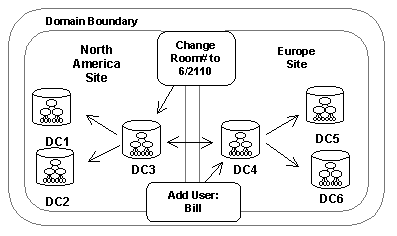
Figure 3: Active Directory supports multi-master
replication for flexibility, high-availability, and performance.
For example, fully synchronized directory replicas can
be made available to each location in a wide area network (WAN). Such a process
can give users faster performance because they can locate resources using the
local directory service rather than by traversing the WAN. These same
directories could be managed locally or remotely depending on available
administrative resources.
What Are the Benefits of Active
Directory? |
Totally integrated with Windows 2000 Server, Active
Directory gives network administrators, developers, and users access to a
directory service that:
 | Simplifies management tasks.
 | Strengthens network security.
 | Makes use of existing systems through
interoperability. | | |
Simplifies Management
Distributed systems often lead to time-consuming and
redundant management. As companies add applications to their infrastructure and
hire more personnel, they need to distribute software to the desktop
appropriately and manage multiple application directories. Active Directory
allows companies to significantly lower management costs by providing a single
place to manage users, groups and network resources, as well as distribute
software and manage desktop configurations. For example, Active Directory uses
one place for managing both Windows 2000 users and Microsoft Exchange mailbox
information. Active Directory helps companies simplify management because
it:
 | Eliminates redundant
management tasks. Provides a single-point of management for Windows
user accounts, clients, servers, and applications as well as the ability to
synchronize with existing directories.
 | Reduces trips to the
desktop. Automatically distributes software to users based on their
role in the company, reducing or eliminating multiple trips that system
administrators need to make for software installation and configuration.
 | Better maximizes IT
resources. Securely delegates administrative functions to all
levels of an organization.
 | Lowers total cost of
ownership (TCO). Simplifies the management and use of file and
print services by making network resources easier to find, configure, and
use. | | | |
How Active Directory Simplifies Management
By organizing users and network resources
hierarchically, Active Directory lets administrators have a single point of
management for user accounts, clients, servers, and applications. This reduces
redundant management tasks and increases accuracy by letting administrators
manage containers or groups of objects rather than each object individually.

Figure 4: Active Directory simplifies management of network
resources.
Active Directory lets administrators delegate specific
administrative privileges and tasks to individual users and groups to make
better use of system administration resources. As shown in Figure 4 above,
specific management tasks, such as resetting user passwords, can be delegated to
the office administrators in the marketing organization. More privileged
functions, such as “create user,” can be reserved for IT
administrators.
Active Directory also lets organizations automatically
distribute software to users based on their role in the company. For example, a
company could specify that all users in the personnel container have the HR
application available to them regardless of where they log on to the network.
Active Directory stores this information centrally and works with
IntelliMirrorTM management technologies to install assigned applications
automatically and give users the ability to access their own desktops regardless
of the workstation they use in the network.
In addition to making network management easier for
administrators, Active Directory also makes it easier for everyone to use the
network. For example, users can directly query the directory for network
resources such as printers. Since the directory can store attributes about
objects, it can store the location and the capabilities of an organization's
printers and expose these attributes as search criteria—so the user can search
for "printers in Building 6 that print color" directly from the
"Start" menu in Windows. What’s more, the directory can refer
the desktop operating system to all the configuration information it needs to
set up a new printer–-so when users find the printer they want, they can
use it right away.
Strengthens Security
Strong and consistent security services are essential to
corporate networks. Managing user authentication and access control is often
tedious and prone to error. Active Directory centralizes management and enforces
role-based security consistent with an organization's business processes. For
example, support for multiple authentication protocols such as Kerberos, X.509
certificates, and smart cards—combined with a flexible access control
model—enables powerful and consistent security services for internal desktop
users, remote dial-up users, and external e-commerce customers. The following
are some ways in which Active Directory strengthens security:
 | It improves password
security and management.
By providing single sign-on to network
resources with integrated, high-powered security services that are
transparent to end users.
 | It ensures desktop
functionality. By locking-down desktop configurations and
preventing access to specific client machine operations, such as software
installation or registry editing, based on the role of the end user.
 | It speeds e-business
deployment. By providing built-in support for secure
Internet-standard protocols and authentication mechanisms such as Kerberos,
public key infrastructure (PKI) and lightweight directory access protocol
(LDAP) over secure sockets layer (SSL).
 | It tightly controls
security. By setting access control privileges on directory objects
and the individual data elements that make them up. | | | |
How Active Directory Strengthens Security
One of the most important architectural advantages of
Windows 2000 Server is the integration of Active Directory and its advanced
security features that enable a new level of data protection. This is
particularly important for organizations that do business over the
Internet.
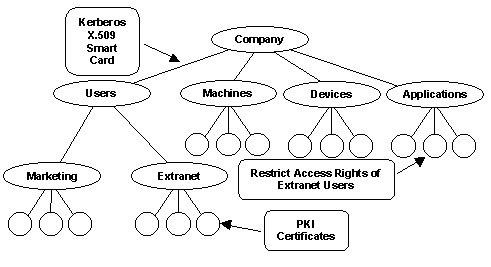
Figure 5: Active Directory provides Internet-ready
security services to protect data while facilitating access.
As illustrated in Figure 5 above, Active Directory acts
as the central authority for governing authentication of user identity and
controlling access to network resources. It supports a number of authentication
mechanisms used to prove identity upon logon to Windows 2000, including
Kerberos, x.509 certificates, and smart cards. Once a user is authenticated and
logged on, all resources in the system are protected and access is granted or
denied based on a single authorization model. This means that organizations
don't have to protect resources one way for users who logon via the intranet and
another way for those who use digital certificates to access resources over the
Internet.
In addition, Active Directory natively supports a fully
integrated public key infrastructure and Internet secure protocols, such as LDAP
over SSL, to let organizations securely extend selected directory information
beyond their firewall to extranet users and e-commerce customers. In this way,
Active Directory strengthens security and speeds deployment of e-business by
letting administrators use the same tools and processes to manage access control
and user privileges across internal desktop users, remote dial-up users, and
external e-commerce customers.
Extends Interoperability
Many companies have a diverse collection of technologies
that must work together. As a result, many corporate networks have an equally
diverse collection of disparate directories as part of e-mail servers,
applications, network devices, firewalls, e-commerce applications, and more.
Active Directory provides a set of standard interfaces for application
integration and open synchronization mechanisms to ensure that Windows can
interoperate with a wide variety of applications and devices. Active Directory
extends interoperability because it:
 | Takes advantage of existing investments and ensures
flexibility. Standards-based interfaces to all features make use of
investments and ensure flexibility for future applications and
infrastructure.
 | Consolidates management of multiple application
directories. Using open interfaces, connectors, and synchronization
mechanisms, organizations can consolidate directories including Novell's
NDS, LDAP, ERP, e-mail, and other mission-critical applications.
 | Allows organizations to deploy directory-enabled
networking. Network devices from leading vendors such as Cisco and 3COM can
use the directory to let administrators assign quality of service and
allocate network bandwidth to users based on their role in the company.
 | Allows organizations to develop and deploy
directory-enabled applications. Using the fully extensible directory
architecture, developers can build applications that deliver functionality
tailored to the needs of the end user. | | | |
How Active Directory Extends Interoperability
Active Directory provides a central integration point
for bringing diverse systems together and for consolidating directories and
management tasks. It does this by exposing all of the Windows 2000 directory
features through standards-based interfaces such as LDAP, ADSI, JADSI, and MAPI
so companies can consolidate existing directories and develop directory-enabled
applications and infrastructure. One example of how Microsoft is using Active
Directory in its own product-line is Microsoft Exchange. The Exchange server has
been integrated with Active Directory to enable companies to manage
Windows 2000 user accounts and Exchange mailboxes in one place.
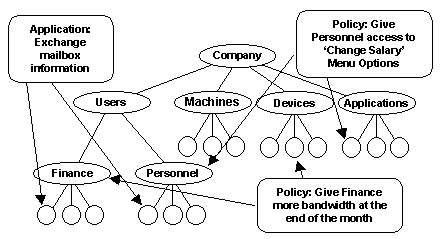
Figure 6: Active Directory provides a platform for
integrating and extending systems through open interfaces, connectors, and
synchronization mechanisms.
As shown in Figure 6 above, Active Directory also
provides a development platform for directory-enabled applications. This lets
application developers control the behavior of an application based on the
user’s role in the company. For example, a directory-enabled application
could reference a user’s profile in the directory and provide specific
menu items and functionality based on his or her job function. That way, a user
in personnel could see the "Change Salary" menu item in an HR
application, while a user in finance would not see that menu, even if the two
users share a computer.
Just as organizations can improve the way their
directory service and applications work together, so can they improve the way
their network hardware and software work with their directory service. By
providing a platform for directory-enabled networks, Active Directory lets
companies match network resource allocation to their business-process
requirements. In particular, administrators can allocate network bandwidth to
users based on their business needs. For example, an administrator could create
a policy that ensures that users in the finance department are allocated
additional bandwidth when they are busy closing books at the end of the month.
The benefits of Active Directory can be extended beyond
the Windows environment. The open synchronization mechanisms within Active
Directory ensure interoperability of the Windows platform with a wide variety of
applications and devices. For example, native support for LDAP, DirSync, and
ADSI interfaces enables leading vendors such as Cisco, SAP, BAAN, and 3COM to
integrate with Active Directory to provide simplified and powerful management of
their multi-platform products.
Today, information about people, applications, and
resources is scattered throughout most corporate information systems—and is
continuing to proliferate. Networks have evolved from loose collections of
connected devices to complex ecosystems made up of interdependent resources. As
a result, network operating systems need to provide much more than simple
network file and print services. They now need to transparently manage the
relationships between distributed network resources.
Active Directory services within Windows 2000
provide a focal point for managing and securing Windows user accounts, clients,
servers, and applications. In addition, Active Directory is designed to
integrate with the non-Windows directories within existing systems,
applications, and devices to provide a single place and a consistent way of
managing an entire network infrastructure. In this way, Active Directory
increases the value of an organization's existing investments and lowers the
overall costs of computing by reducing the number of places where administrators
need to manage directory information.
 Exploring Directory Services
Exploring Directory Services
 Active Directory Overview: Windows Media Presentation
Active Directory Overview: Windows Media Presentation

|
 |
Last Updated: Monday, March 20, 2000
© 2000 Microsoft Corporation. All rights reserved. Terms of use.
|
|


